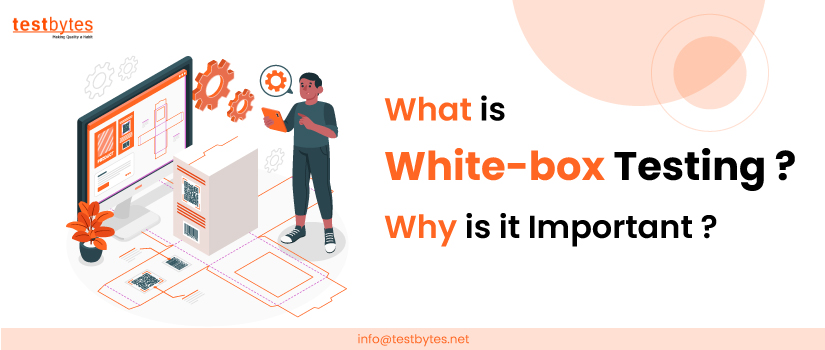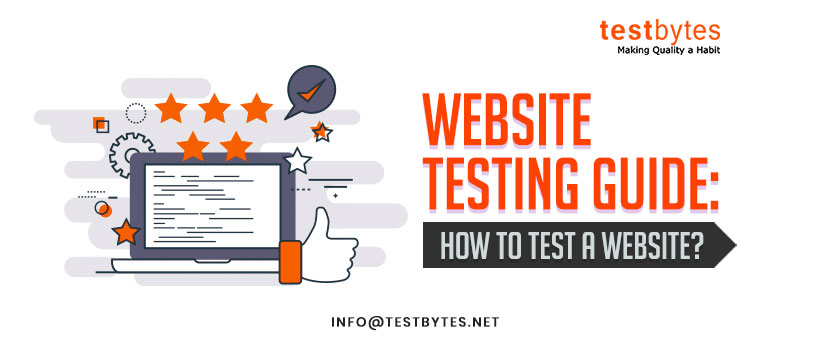
Golang Testing: Tutorial Exclusively for You!
February 4th, 2019

Go, the renowned programming language was designed by Ken Thompson, Rob Pike, and Robert Griesemer and is very similar to C, which was first released 46 years ago in 1972.
Go programming language or Golang offers exclusive features like garbage collection, memory safety, CSP-style concurrency, and structural typing. It is an open source language, which means you can use the tools, source code, and the compiler for free.
The language is often described as having the efficiency and static typing of C++ and Java and, ease of use and productivity of JavaScript and Python.
Golang is mostly used as a standard for API documentation, building, testing, and package management.
Golang testing acts as a micro benchmark and can be used for unit testing. The language also comes with a special package that makes writing tests very easy.
Understanding Golang Testing
Testing is a crucial part of every website, web application, and mobile application development process. It is a series of processes that give the same results and confirms that the software is free of errors.

Tests are not limited to the software work. Every time you go to buy an electronic, you switch it on and check if it is working fine.
Tests can be simple or complicated like DiRT by Google. Golang testing is very similar to it. For testing, you have to write a code, which makes the typing automatic.
It is usually faster than manual testing because it is written in code and developers can share it among themselves.
For example, if you wrote a code to check the sum of two numbers, you will have to write the following test to ensure it works as expected.

You run this test on Go Playground to check if its giving the expected results. In this test, we wrote the main package, which isn’t a problem when you are testing a small function.
You cannot write the main package over and over again, as it is not only time consuming, but also takes up unnecessary space.
When you start the test with a tool by Golang, you only have to mention the Go testing package and begin with the sub part.

This is what you will write for the same addition function we mentioned above. Package testing101 is the main package.

This is how the test result will look like.
Naming files for go testing
Golang testing is so easy because it is a standardized process. You need to name the files in a particular way for them to be recognized by the tester. Here’s the protocol that you should always remember:
1. File name
Golang needs you to end each file name with _test.go. It is easier for the language to identify files that are to be tested and provide the exact functionality during the testing process.
2. Type of package
After selecting the file name, you have to select the testing package. It can be for identifying an error or deviation from the expected result.
3. Function name
In the above example, the function name that you should use is TestSum(). When you write the code, you should write it as func TestXxx(*testing.T). Xxx is any name that you want to give to it. Remember, the first character should always be an uppercase character or a number.
Adding Multiple Tests For one Function
The test code that we mentioned above is a very simple one. There is only one test for the function but when you are writing it, you might be realise that you want to check the function’s other features as well. For example, you might want to test if the function can handle negative numbers or not.
Also Read: Adhoc Testing: A Brief Note With Examples
Golang is the easiest when it comes to adding multiple tests to one code. All you have to do is create another file, for example – sum_test.go. Then you add the function of negative numbers, which can be TestSumWithNegatives().
Here, you don’t need to create multiple test functions but only one – testing.T. Add Run() to it, which lets you add a sublet test.

This is how your code with multiple functions look like.
Advanced Golang testing techniques
Now that you know the basics, it is time to go a level up and take a look at some of the advanced Golang testing techniques.
1. Test suites
In suite testing, you develop a test that is 100 percent contrasting from the common interface. You can use it to check different types of test implementations. Check below to see how the test you code will look like after you use suite testing.

You may have previously had the chance to work with codebases that use this kind of testing. They are mostly used in plugin-based systems because they use tests that are coded against the interface.
Their primary use of it is to check if the system meets all the behavior requirements as intended. Suite testing is going to save you days of work and give you more time to focus on solving P versus NP problems.
In this type of testing, you swap two types of testing without needing to write more number of tests.
You will have to use the dependency injection to set up the suite from your testing package to implement it.
Check the golang.org/x/net/nettest library to find wonderful examples of suite testing. You will also find some handy ones on Github.
2. Non-interface pollution
An interface is crucial for testing and is considered as the most powerful tool, which means you need to understand how to use it correctly.
A package exports an interface, which is either used by the consumers to try a package implementation mock or export a mock that they develop.
Before you export the interface, you need to carefully analyze them. Instead of exporting an interface that mocks out consumer behavior, developers should develop a document that increases hard dependency their package and that of the customers.
If you don’t want to use a particular interface, you can keep it within the package by using internal/ package subtree.
After doing so, you don’t have to worry about the customers taking advantage of it. It is a flexible choice as developers can create new interfaces according to new requirements.
To run tests locally, you can use dependency injection and create interfaces only for external dependencies.
3. Use net/http/httptest
When you use http test, you can access the http. Handler code without having to bind to a port or spin up a server. T
he tests are a lot faster and you can run all of them simultaneously, without any obstruction. Let’s take a look at how the test will look like when you use net/http/httptest advanced testing method.

With net/http/httptest, you can divide the test into different sections and test only a particular part of the function.
You don’t have to face any side effects like no middleware or no routers, when you use handler factories, servers, handler factory factories, and other services that are a part of Golang testing.
4. Separate _test package
Even though you develop files in pkg_test.go, they are stored under one domain — package pkg.
However, you can create a new test package within a package and name it foo_test.go. The test will be saved in the foo/ library and declared as package foo_test. If you want to download some dependencies, you can visit github.com/example/foo to import them.
We recommend you to use this method for cyclic dependencies and make the package easy to use. You no more need to perform brittle tests.
Benefits of using Golang Testing
Golang has made a lot of news in last couple of years because it makes the process of software development easy and more enjoyable. Here are four reasons why you need to start using Golang testing:
1. Tried and tested
Some of the best companies across the world use Golang testing. These companies include Dropbox, Apple, Google, The Economist, Twitter, IBM, YouTube, Facebook, The New York Times, Docker, and BBC. This indicates that Golang is a programming language fit for fulfilling the needs of the future.
2. Open source
Golang is just one of the things that Google offers for free to everyone who would like to use them. Since it is an open-source programming language, it is clean and more efficient compared to other languages.
3. Simple and fast

Thanks to its simple syntax and structure, Golang. It is also easy to learn as the whole language is based on functions. Golang offers a short processing time, which means you can release your product faster in the market. It not only saves time, but also gives you more time to capture the market.
4. Special features
Golang has an automatic memory management that keeps up the speed of the performance. It is easy to keep bugs away with the language because it is a compilation of several others. Developers need to stay more attentive while coding for the code to be accurate and neat.


 Software Testing Events
Software Testing Events App Testing
App Testing Web App Testing
Web App Testing Game Testing
Game Testing Automation Testing
Automation Testing Load Testing
Load Testing Security Testing
Security Testing Performance Testing
Performance Testing Hire a Tester
Hire a Tester






